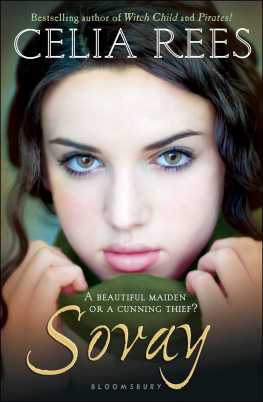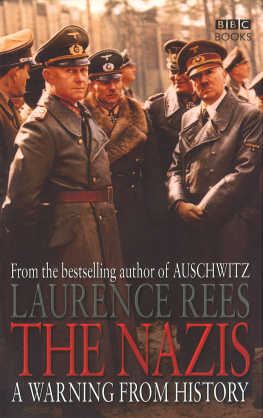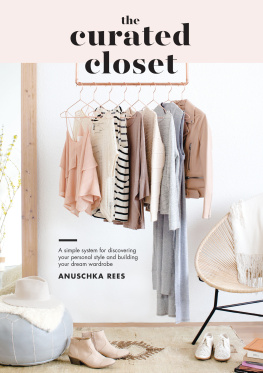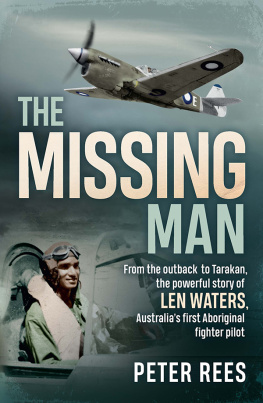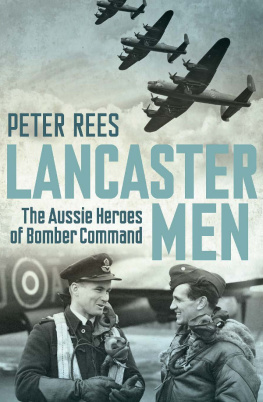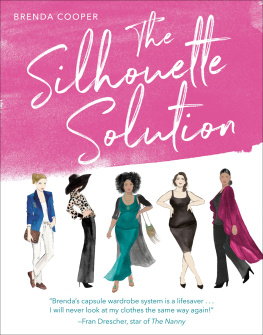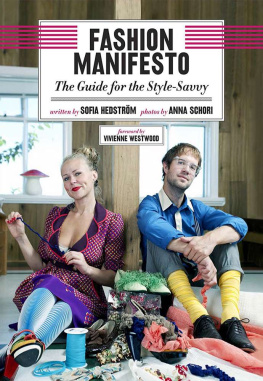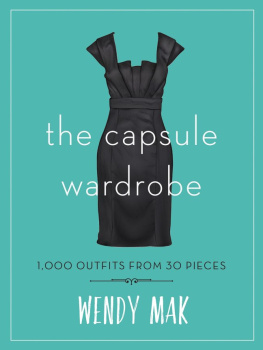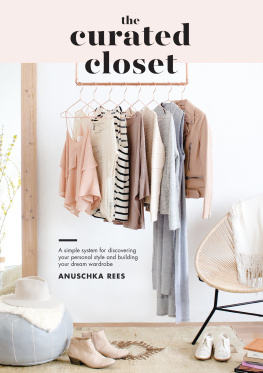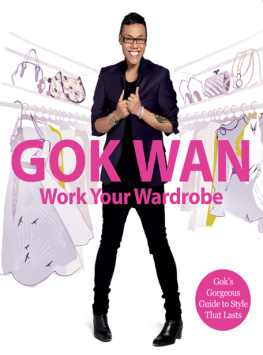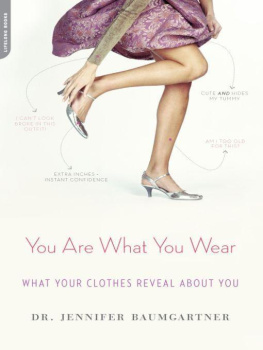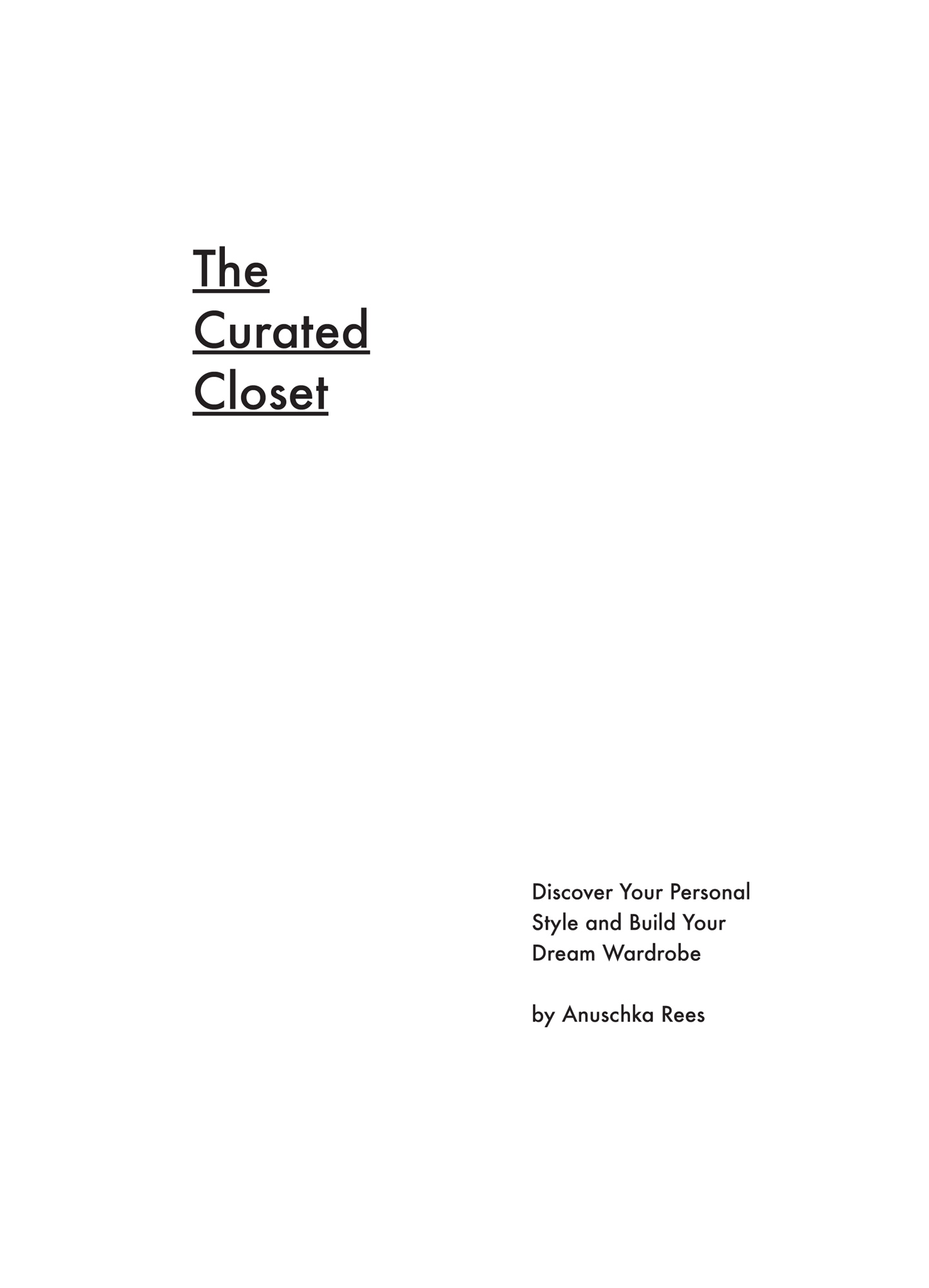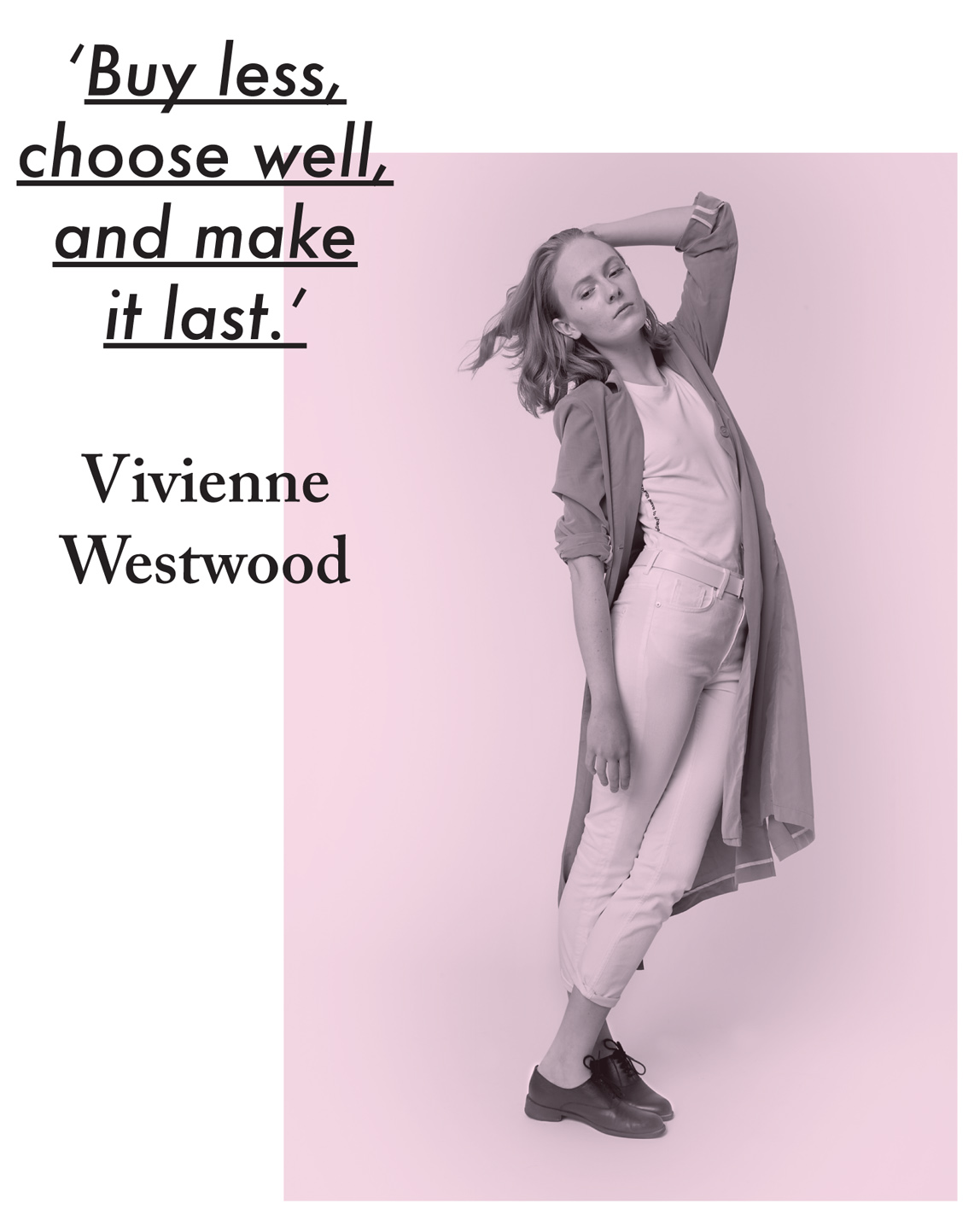Contents
What is The Curated Closet?
The Curated Closet is a wardrobe thats perfectly tailored to your unique personal style and your life. It contains everything you need to feel confident and inspired everyday no more and no less. It is not based on trends, style typologies or a one-size-fits-all list of wardrobe essentials.
Your life isnt the same as everyone elses, so why should your closet be?
About the Author
Anuschka Rees is a writer and the founder of popular style blog INTO-MIND.com.
Her minimal ethos and background in social psychology inspires her unique, life-changing approach to shopping and style. She lives in Berlin, Germany. The Curated Closet is her first book.
@anuschkarees
@intomind
About the Book
For anyone who turns their bedroom upside down before going out, feels like they are wearing the same old thing or finds shopping a chore, The Curated Closet will change your wardrobe and your life.
Berlin-based style writer Anuschka Rees rejects the clichd fashion rules and encourages you to look in your wardrobe and at your life, as well as in the mirror, to create the style guidelines that truly speak to you.
With her refreshingly practical approach, complete with expert tips, infographic questionnaires and tailored shopping strategies (and how to put them into action), get the wardrobe youve always wanted, develop your own personal look and live a stylish and fulfilling life.
You will never say I have nothing to wear ever again.
Introduction
A tale of bargains, impulse buys, and seasonal must-haves
Heres where it all started: in London, in a studio apartment in Camden Town.
That apartment was truly tiny, but the closet inside was huge and jam-packed. I had a ton of clothes and absolutely nothing to wear.
The strange thing was that, given the time, energy and money I had spent on my clothes, youd think Id have a lot more to show for it. I have always been really into fashion, had a subscription to at least five different fashion magazines from age fifteen onwards, and knew my herringbone from my houndstooth early on. I went shopping almost every weekend and spent many evenings on the sofa clicking through eBay listings and checking the new arrivals page of my favourite online stores.
In short: I was really excited about fashion and definitely not a newbie. And yet, despite my clear obsession and a full closet, it routinely took me more than an hour to come up with a single outfit to wear to a party, let alone brunch on Sundays or any other occasion that called for more than my go-to jeans and a T-shirt.
Of course, in retrospect, the reasons for my wardrobe troubles now seem pretty obvious.
For starters, I was a poor student living in London, one of the most expensive cities in the world, and, like most other fashion-conscious students on a budget, I tried to make the most of what little money I had by spreading it across as many pieces as possible. I shopped exclusively at fast-fashion, low-priced retailers, kept close tabs on the sales sections at all times, and considered a T-shirt costing more than ten pounds a total rip-off. I was also a complete sucker for great deals like three-for-two, had at least ten different store cards, and would often get up in the middle of the night to stalk whatever bargain I had found on eBay.
Ironically, I was pursuing my masters in psychology at that time and really should have known better than to fall for the most basic sales technique there is: short-term price reductions. The fact that for most people all reasonable decision making goes out the window as soon as they are faced with huge price reductions is something you learn in Social Psychology 101. If I saw something on sale that looked interesting, I would rationalise even obvious faults with the piece and lower my standards. I felt that 20 per cent off meant I could compromise on things like fit or how the fabric felt on my skin, and of course those were always the pieces that got tossed to the back of my closet after one wear.
Apart from my questionable shopping strategy, I also had a very warped idea of what it meant to dress well. To me, having great style and dressing according to the latest trends were one and the same. And consequently, I also thought there was only one version of style, only one way to dress well that I somehow had to get behind and emulate.
In some ways this idea made things seem relatively straightforward, because it meant there are clear-cut rules and principles that would eventually turn you into the ultra-stylish, confident person you long to be, as long as you followed them. And so thats what I tried to do. I studied fashion magazines and runway shows and then tried to hunt down as many budget-friendly alternatives to the seasons must-haves as possible. I had my seasonal colour type all figured out, was really into body-shape typologies, and filled out every style quiz I could find. I tried to stick exclusively to the recommended colours and silhouettes for my colouring and body type and went on to stock my closet with a crisp white button-down shirt, a black blazer, classic pumps, and all the other pieces that fashion magazines had identified as essential.
I bought right into the one-size-fits-all mentality that the entire fashion industry so often conveys, perhaps not out of bad will, but for simplicitys sake and to satisfy a demand for quick fixes.
In retrospect, its no wonder that I was unhappy with my wardrobe. I was stuck in the typical life cycle of the fast shopper.
Because I was all about getting a good deal, I based my purchasing decisions above all on the price of a piece, rather than its quality, how well it fit into my existing wardrobe, or even how much I liked it. I never took the time to truly figure out how I wanted to dress and what type of clothes would work for my life. I didnt have a strategy. I bought clothes on impulse and often based on other peoples opinion of them, without listening to my own creative impulses. The combination of all these factors left me with a mishmash of no-good pieces that suited neither my style nor my life. I might have had a full closet, but I didnt have anything to wear that I was actually excited about, and because of that, I always needed more. I kept on buying, more and more of the same low-quality stuff, usually for every new party or event that came up. But every new purchase of course just added to what was already an incoherent mess. Everything was just another quick fix.
Fast forward a couple of years: I still love fashion and still have my magazine subscriptions, but Ive stopped chasing trends and wasting my money on flimsy polyester pieces and seasonal must-haves. Ive learned how to buy less but choose better. I own fewer clothes now, but I actually have something to wear.
So what happened? Well, I eventually became so unhappy with the state of my wardrobe that I realised my entire approach needed a serious overhaul. Spending all that money on things Id never end up wearing started to feel wrong. And then I had a lightbulb moment:
The people I most admire for their style arent those that follow every trend and dress in designer clothes from head to toe, but people like Sofia Coppola, Charlotte Gainsbourg and Grace Coddington. These women are style icons not because they follow rules but because they make their own, and each have a strong sense of style and a clear signature look.


